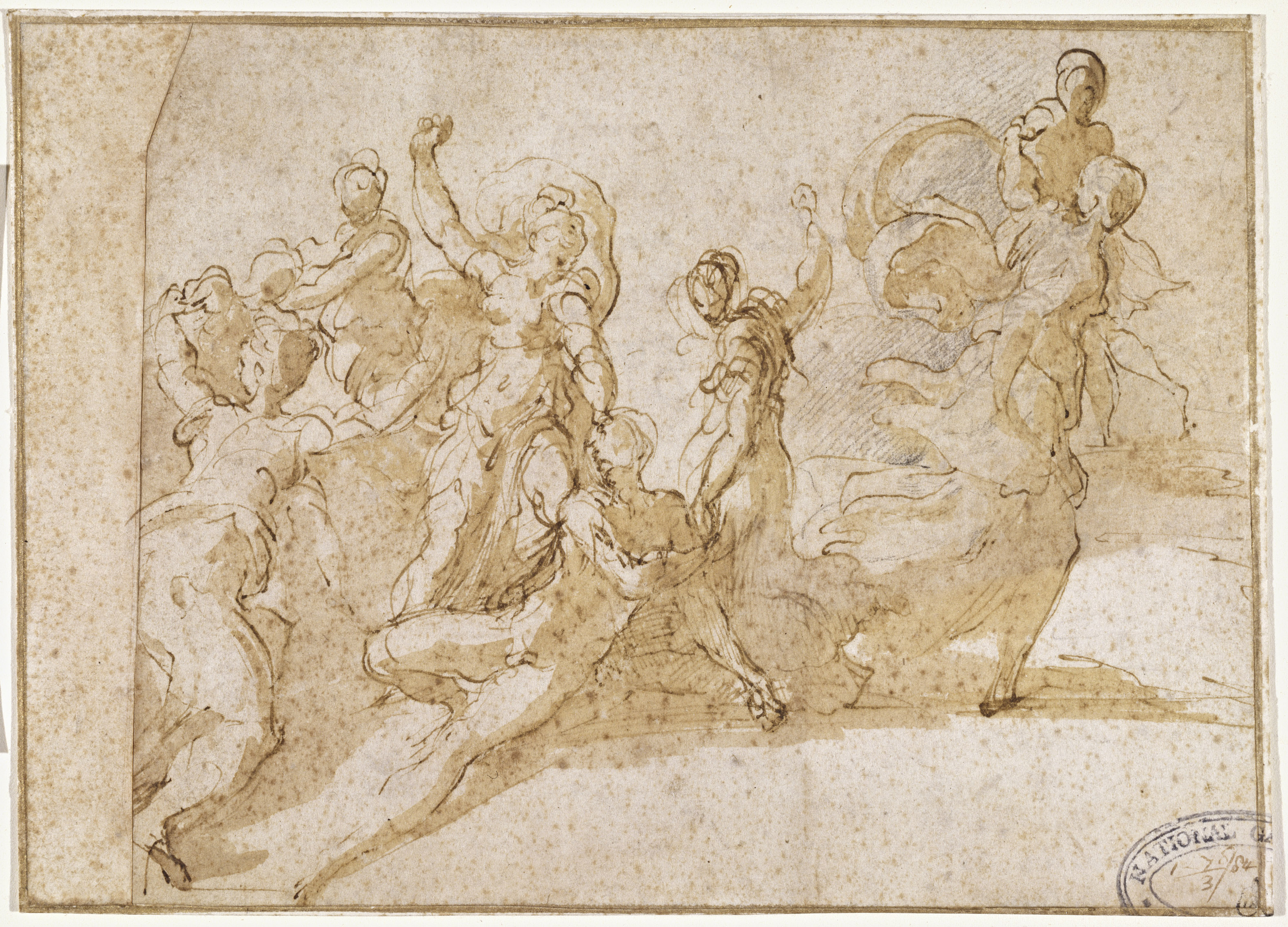
Title: The Death of Orpheus by Parmigianino
Place: Rome
Date: c. 1526
Medium & technique: Pen and brown ink with brown wash, pencil added; laid down with gold ruled border
Dimensions: 135 x 172 mm (irregular)
Themes: Monstrous – Marvellous
Collection: National Gallery of Victoria, Melbourne, 1278.727-3. Felton Bequest, 1923. This digital record has been made available on NGV Collection Online through the generous support of the Joe White Bequest.
In this energetic pen and ink study, Parmigianino (Girolamo Maria Francesco Mazzola, 1503–40) represents the mythological musician Orpheus lying on his side, possibly ready to play his harp, when a group of women attack him. With arms raised, they strike blows, and one woman violently rips the hero’s head backward. Orpheus, son of Apollo and the muse Calliope, is best known for his tragic failure to rescue his bride Eurydice from the underworld. But the poet Ovid describes how later in life Orpheus apparently abjured women and focused his amorous attention on young boys. As a consequence, the Ciconian women – followers of the god Dionysus – grew enraged and attempted to beat Orpheus with sticks, but his music thwarted their blows. Finally, they tore him to pieces, killing him with their bare hands.
We see Orpheus turning to face the violent blows of his assailants. The women’s bodies are drawn with rapid, energetic strokes of the pen, whereas his form constitutes a more controlled study in shadow, with deliberate hatchings articulating the area beneath his left arm. Parmigianino’s composition derives from an earlier print after a lost design by Andrea Mantegna. Parmigianino studied that print closely but stripped it of many details. Instead, he focused on Orpheus’s anguish and the almost choreographed violence of his attackers.
Edward Wouk, University of Manchester
Further Reading:
A. E. Popham, Catalogue of the Drawings of Parmigianino, 3 vols (New Haven and London: Yale University Press, 1971), p. 115, no. 281, pl. 271.
Helmut Puff, ‘Orpheus after Eurydice (according to Albrecht Dürer),’ in Dead Lovers: Erotic Bonds and the Study of Premodern Europe, eds. Basil Duffallo and Peggy McCracken (Ann Arbor: The University of Michigan Press, 2006), 71-95.